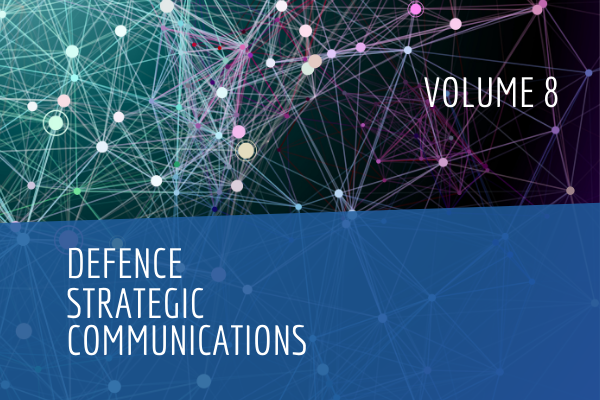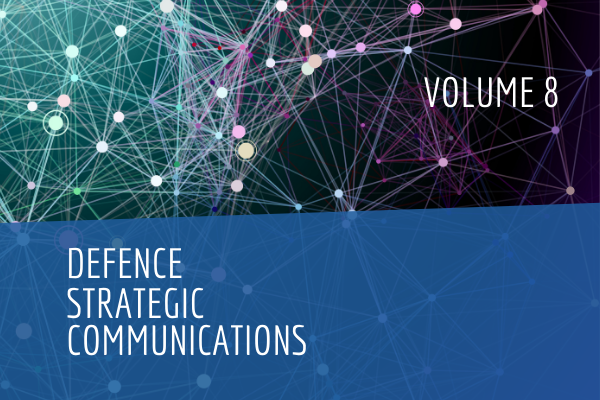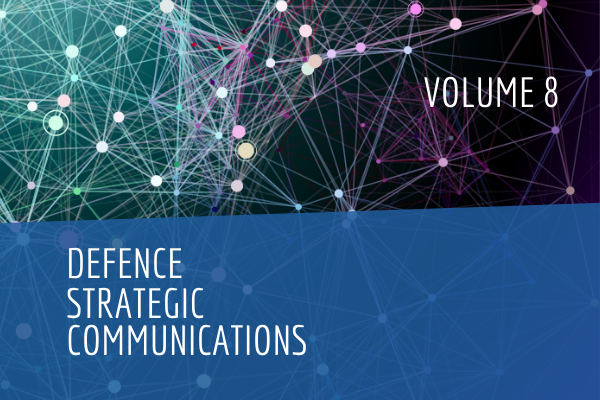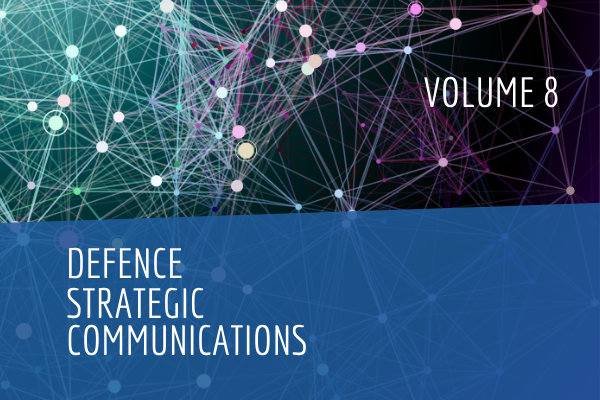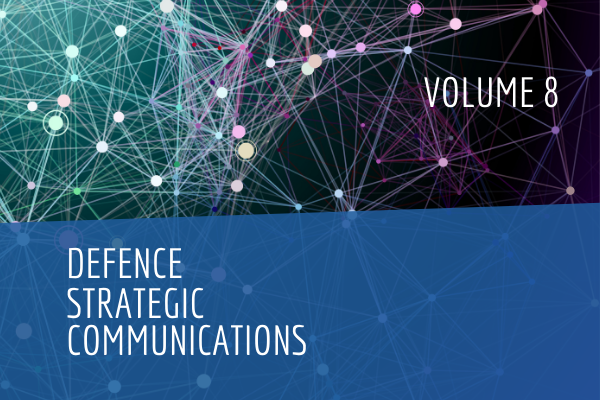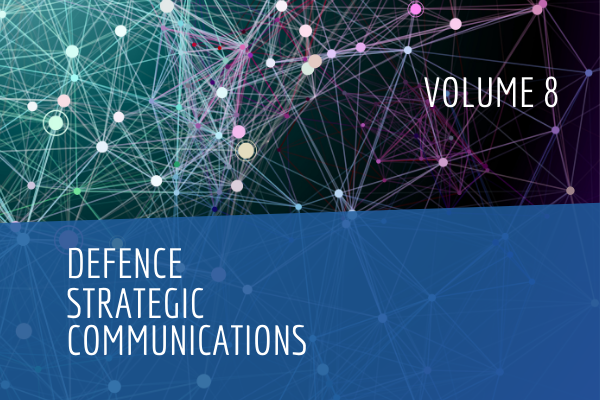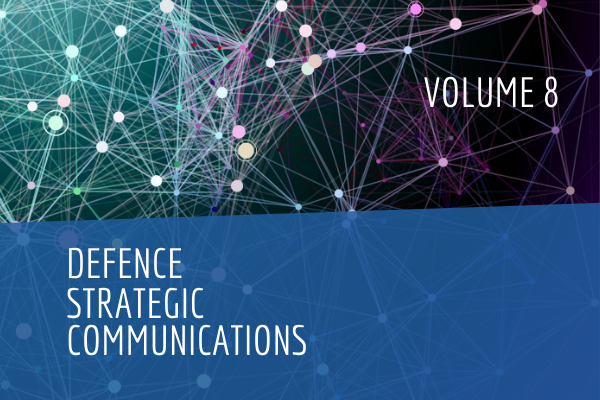Abstract
False information that appears similar to trustworthy media content, or what is commonly referred to as ‘fake news’, is pervasive in both traditional and digital strategic communication channels. This paper presents a comprehensive bibliographic analysis of published academic articles related to ‘fake news’ and the related concepts of truthiness, post-factuality, and deepfakes. Using the Web of Science database and VOSViewer software, papers published on these topics were extracted and analysed to identify and visualise key trends, influential authors, and journals focusing on these topics. Articles in our dataset tend to cite authors, papers, and journals that are also within the dataset, suggesting that the conversation surrounding ‘fake news’ is still relatively centralised. Based on our findings, this paper develops a conceptual ‘fake news’ framework—derived from variations of the intention to deceive and/or harm—classifying ‘fake news’ into four subtypes: mis-information, dis-information, mal-information, and non-information. We conclude that most existing studies of ‘fake news’ investigate mis-information and dis-information, thus we suggest further study of mal-information and non-information. This paper helps scholars, practitioners, and global policy makers who wish to understand the current state of the academic conversation related to ‘fake news’, and to determine important areas for further research.
Keywords—‘fake news’, deepfakes, truthiness, post-fact, bibliometric analysis, misinformation, disinformation, mal-information, non-information, strategic communication, strategic communications
About the Authors
Andrew Park is a PhD candidate at Simon Fraser University, Canada. His research interests include innovation and marketing and their intersection with technology management.
Matteo Montecchi is a Fellow in Marketing at King’s College London, United Kingdom. He is interested in exploring the strategic value of transparency in marketing and media.
Cai ‘Mitsu’ Feng is a PhD student at Simon Fraser University, Canada. Her research interests include marketing strategies with social media.
Kirk Plangger is a Senior Lecturer in Marketing at King’s College London, United Kingdom. His research concerns digital interactive technologies and marketing.
Leyland Pitt is a Professor of Marketing at Simon Fraser University, Canada. His interests are in the interaction between marketing and technology.
Bibliography
Allcott, Hunt, and Matthew Gentzkow, ‘Social Media and Fake news in the 2016 Election’, Journal of Economic Perspectives 31, N° 2 (2017): 211–36.
Baym, Geoffrey, ‘The Daily Show: Discursive Integration and the reinvention of Political Journalism’, Political Communication 22, N° 3 (2005): 259–76.
Berthon, Pierre R., and Leyland F. Pitt, ‘Brands, Truthiness and Post-fact: Managing Brands in a Post-rational World’, Journal of Macromarketing 38, N° 2 (2018): 218–27.
Boell, Sebastian K., and Dubravka Cecez-Kecmanovic, ‘On Being “Systematic” in Literature Reviews’, in Sauer et al. (eds.), Formulating Research Methods for Information Systems (London: Palgrave Macmillan, 2015), p. 48–78.
Boutyline, Andrei, and Robb Willer, ‘The Social Structure of Political Echo Chambers: Variation in Ideological Homophily in Online Networks’, Political Psychology 38, N° 3 (2017): 551–69.
Brennen, J. Scott, Felix Simon, Philip N. Howard, and Rasmus Kleis Nielsen, ‘Types, Sources, and Claims of COVID-19 Misinformation’, Reuters Institute 7 (2020). [Accessed 15 May 2020]
Citron, Danielle K., and Robert Chesney, ‘Deep Fakes: A Looming Crisis for National Security, Democracy and Privacy?’, Lawfare (2018). [Accessed 15 May 2020]
Campbell, Colin, and Lawrence J. Marks, ‘Good native advertising isn’t a secret’, Business Horizons 58, N° 6 (2015): 599–606.
Campbell, Colin, and Nathaniel J. Evans, ‘The Role of a Companion Banner and sponsorship Transparency in Recognizing and evaluating Article-style Native Advertising’, Journal of Interactive Marketing 43 (2018): 17–32.
Chesney, Bobby, and Danielle Citron, ‘Deep Fakes: A Looming Challenge for Privacy, Democracy, and National Security’, California Law Review 107 (2019): 1753. [Accessed 15 May 2020]
Connolly, John, He (London: Hodder & Stoughton, 2017), p. 89
169 Crossan, Mary M., and Marina Apaydin, ‘A Multi‐dimensional Framework of Organizational Innovation: A Systematic Review of the Literature’, Journal of Management Studies 47, N° 6 (2010): 1154–91.
De Regt, Anouk, Matteo Montecchi, and Sarah Lord Ferguson, ‘A False Image of Health: How Fake news and Pseudo-facts Spread in the Health and Beauty Industry’, Journal of Product & Brand Management (2019): 168–79.
Ekman, Paul, ‘An Argument for Basic Emotions’, Cognition & Emotion 6, N° 3–4 (1992): 169–200.
Egelhofer, Jana Laura, and Sophie Lecheler, ‘Fake news as a Two-dimensional Phenomenon: A Framework and Research Agenda’, Annals of the International Communication Association 43, N° 2 (2019): 97–116.
Flostrand, Andrew, Leyland Pitt, and Jan Kietzmann, ‘Fake news and Brand Management: A Delphi Study of Impact, Vulnerability and Mitigation’, Journal of Product & Brand Management (2019): 246–54.
Garrett, R. Kelly, ‘Echo Chambers Online?: Politically Motivated Selective Exposure Among Internet News Users’, Journal of Computer-Mediated Communication 14, N° 2 (2009): 265–85.
Gelfert, Axel, ‘Fake news: A Definition’, Informal Logic 38, N° 1 (2018): 84–117.
Grewal, Dhruv, Nancy Puccinelli, and Kent B. Monroe, ‘Meta-analysis: Integrating Accumulated Knowledge’, Journal of the Academy of Marketing Science 46, N° 1 (2018): 9–30.
Gu, Yiquan, and Tobias Wenzel, ‘Strategic Obfuscation and Consumer Protection Policy’, The Journal of Industrial Economics 62, N° 4 (2014): 632–60.
Haiden, Leonie, ‘Tell Me Lies, Tell Me Sweet Little Lies’, Fake news-A Roadmap (Riga: Latvia: NATO Strategic Communications Centre of Excellence, 2018).
Hendrix, Justin, and David Carroll, ‘Confronting a Nightmare for Democracy: Personal Data, Personalized Media and Weaponized Propaganda’ Medium, 4 May 2017. [Accessed 15 May 2020]
Hoffman, Lindsay H., and Dannagal G. Young, ‘Satire, Punch Lines, and the Nightly News: Untangling Media Effects on Political Participation’, Communication Research Reports 28, N° 2 (2011): 159–68.
Jun, Seung-Pyo, Hyoung Sun Yoo, and San Choi, ‘Ten Years of Research Change Using Google Trends: From the Perspective of Big Data Utilizations and Applications’, Technological Forecasting and Social Change 130 (2018): 69–87.
Khaldarova, Irina, and Mervi Pantti, ‘Fake news: The Narrative Battle Over the Ukrainian Conflict’, Journalism Practice 10.7 (2016): 891–901.
Kietzmann, Jan, Linda W. Lee, Ian P. McCarthy, and Tim C. Kietzmann, ‘Deepfakes: Trick or treat?’, Business Horizons 63, N° 2 (2020): 135–46.
Köhler, Christine, Murali K. Mantrala, Sönke Albers, and Vamsi K. Kanuri, ‘A Meta-analysis of Marketing Communication Carryover Effects’, Journal of Marketing Research 54, N° 6 (2017): 990–1008.
Kohtamäki, Marko, Rodrigo Rabetino, and Kristian Möller, ‘Alliance Capabilities: A Systematic Review and Future Research Directions,’ Industrial Marketing Management 68 (2018): 188–201.
Krauskopf, Erwin, ‘A Bibliometric Analysis of the Journal of Infection and Public Health: 2008–2016’, Journal of Infection and Public Health 11, N° 2 (2018): 224–29.
Kwai, Isabella, ‘Samoa Closes Schools as Measles Epidemic Kills at Least 16’, New York Times, 18 November 2019. [Accessed 15 May 2020]
Lazer, David MJ., Matthew A. Baum, Yochai Benkler, Adam J. Berinsky, Kelly M. Greenhill, Filippo Menczer, Miriam J. Metzger, Brendan Nyhan, Gordon Pennycook, David Rothschild, Michael Schudson, Steven A. Sloman, Cass R. Sunstein, Emily A. Thorson, Duncan J. Watts, Jonathan L. Zittrain, ‘The Science of Fake news, Science 359, N° 6380 (2018): 1094–96.
Marshall, Penny, ‘What is Fake news, What Are the Worst Examples and Why Does It Matter?’, Independent TeleVision (ITV) Service, 18 February 2019. [Accessed 15 May 2020]
McCarthy, Ian P., David Hannaha, Leyland F. Pitt, and Jane M. McCarthy, ‘Confronting Indifference Toward Truth: Dealing with Workplace Bullshit’, Business Horizons (2020): 253–63.
171 McManus, Chelsea and Celeste Michaud, ‘Never Mind the Buzzwords: Defining Fake news and Fake Truth’, in Jente Althuis , and Leonie Haiden (eds.), Fake news: A Roadmap. (Riga: Latvia: NATO Strategic Communications Centre of Excellence: 2018).
Nielsen, Rasmus Kleis, Richard Fletcher, Nic Newman, J. Scott Brennen, and Philip N. Howard, ‘Navigating the “Infodemic”: How People in Six Countries Access and Rate News and Information about Coronavirus’, Misinformation, Science, and Media (2020): 2020–04. [Accessed 15 May 2020]
Paschen, Jeannette, ‘Investigating the Emotional Appeal of Fake News’ Using Artificial Intelligence and Human Contributions’, Journal of Product & Brand Management (2019): 223–33.
Plangger, Kirk, and Leyland Pitt, ‘Brands and Brand Management Under Threat in an Age of Fake News, Journal of Product & Brand Management, 292, N° 2 (2020): 141–43.
Polley, David E., ‘Visualizing the Topical Coverage of an Institutional Repository with VOSViewer’, Data Visualization: A Guide to Visual Storytelling for Libraries 111 (2016).
Scott, Mark, ‘Facebook’s Private Groups are Abuzz with Coronavirus Fake news, Politico, 30 March 2020. [Accessed 15 May 2020]
Sarmento, Maria, and Cláudia Simões, ‘The Evolving Role of Trade Fairs in Business: A Systematic Literature Review and a Research Agenda’, Industrial Marketing Management 73 (2018): 154–70.
Shah, Syed Hamad Hassan, Shen Lei, Muhammad Ali, Dmitrii Doronin, and Syed Talib Hussain, ‘Prosumption: Bibliometric Analysis Using HistCite and VOSViewer’, Kybernetes (2019): 1020–45.
Smaliukienė, Rasa, and Antanas Survilas, ‘Relationship Between Organizational Communication and Creativity: How it Advances in Rigid Structures?’, Creativity Studies 11, N° 1 (2018): 230–43.
Tandoc Jr, Edson C., Zheng Wei Lim, and Richard Ling, ‘Defining ‘Fake News”: A Typology of Scholarly Definitions’, Digital Journalism 6, N° 2 (2018): 137–53.
Vafeiadis, Michail, Denise S. Bortree, Christen Buckley, Pratiti Diddi and Anli Xiao, ‘Refuting Fake News on Social Media: Nonprofits, Crisis Response Strategies and Issue Involvement’, Journal of Product & Brand Management 29, N° 2 (2019): 209–22.
Van Eck, Nees Jan, and Ludo Waltman, ‘Software Survey: VOSViewer, a Computer Program for Bibliometric Mapping’, Scientometrics 84, N° 2 (2010): 523–38.
Van Eck, Nees Jan, Ludo Waltman, Rommert Dekker and Jan van den Berg, ‘A Comparison of Two Techniques for Bibliometric Mapping: Multidimensional Scaling and VOS’, Journal of the American Society for Information Science and Technology 61, N° 12 (2010): 2405–16.
Van Nunen, Karolien, Jie Li, Genserik Reniers and Koen Ponnet, ‘Bibliometric Analysis of Safety Culture Research’, Safety Science 108 (2018): 248–58.
Vosoughi, Soroush, Deb Roy, and Sinan Aral, ‘The Spread of True and False News Online’, Science 359, N° 6380 (2018): 1146–51.
Wardle, Claire, and Hossein Derakhshan, Information Disorder: Toward an Interdisciplinary Framework for Research and Policy Making, Council of Europe Report 27 (2017). [Accessed 15 May 2020]
Webster, Jane, and Richard T. Watson, ‘Analyzing the Past to Prepare for the Future: Writing a Literature Review’, MIS Quarterly (2002): xiii–xxiii.
Ye, Chunlei, ‘Bibliometrical Analysis of International Big Data Research: Based on Citespace and VOSViewer’, in 2018 14th International Conference on Natural Computation, Fuzzy Systems and Knowledge Discovery (ICNC-FSKD), 927– 32. IEEE, 2018.
